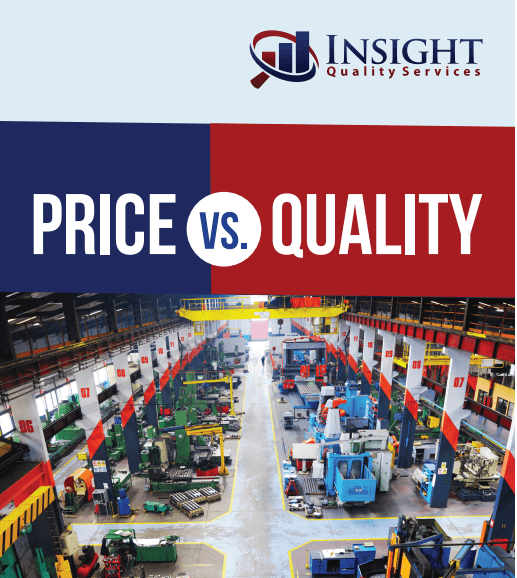The Wall Street Journal has brought a lot of (probably unwanted) attention to Amazon recently.
In August, WSJ released an exposé pointing out the many issues that the eCommerce behemoth has had with product safety.
The piece asserts that, because of Amazon’s unwillingness to police third-party sellers, the site is rife with ”Thousands of Banned, Unsafe or Mislabeled Products.”
In fact, the investigators “found 4,152 items for sale on Amazon.com Inc.’s site that have been declared unsafe by federal agencies, are deceptively labeled or are banned by federal regulators—items that big-box retailers’ policies would bar from their shelves.”
A major part of the problem is that, in 2018, 60% of the physical products sold on Amazon were actually coming from third-party sellers.
And because Amazon does not generally play an active role in the quality control for these products, it is up to the individual sellers to be held responsible for any safety issues.
So, what does this mean for all the sellers taking part in the Fulfillment By Amazon model?
Sellers Need to Take Full Responsibility for Quality Control
Selling your products to a big-box retailer is a very different experience from selling on Amazon.
Stores like Walmart have specific requirements for product testing that must be met in order for your items to go on their shelves. Lab tests are an important aspect of quality control
Amazon doesn’t have these kinds of requirements for an importer who is listing their products as a third-party seller.
So, if you are that seller, Amazon is passing all that legal responsibility on to you.
You are the importer of record, you are the one selling the product, and you are the one legally responsible if a consumer is harmed or even dies as a result of using the product.
Amazon sellers have a legal obligation to ensure the products they’re selling are safe and meet any relevant standards in the country where they are being sold.
Because of this, it is important that you put a quality plan into place.
Just having a basic quality plan puts you in control of the situation and allows you to properly ensure product quality.
Your Quality Plan and the Elements it Should Contain
A quality plan starts with proper product specifications.
It is important that you have clear specifications for the types of materials that should go into your product, the dimensions of your product, the components it is made up of, etc.
Only when you have clear specifications for your product can you hold your factory accountable and set the proper expectations.
Without specifications, you’re leaving it up to the factory to make changes as they see fit, whether it’s to lower their costs or for any other reason.
The threat of quality fade is real in low-cost countries.
If your manufacturing partner were to change the grade of plastic in a children’s toy, for example, it might break or splinter more easily, becoming dangerous for infants to play with. Quality inspections help verify that your products are well made
By putting them on notice that you will be doing this, they will have less leeway to change things and will be more likely to hold themselves to a high standard.
In addition, you should decide on a frequency for conducting third-party lab tests.
These tests will help you identify whether products have high amounts of lead or hazardous chemicals that you don’t expect.
So if you haven’t already, it is wise to put together a quality plan that, at a bare minimum, outlines:
- Your specifications
- Your inspection plan
- Your testing plan
Doing so will put you in a much better position than if you had no quality plan at all.
Summary: Amazon Sellers Need to Take Steps to Ensure Quality
With the problems we’ve seen from third-party sellers on Amazon, it is important that if you are one, you take full responsibility for your quality control.
To do this, you need to come up with at least a basic quality plan and put it into effect.
This includes things like documenting your specifications, setting an inspection plan, and setting a testing plan.
Doing so can help you avoid problems with quality fade from your manufacturers or unexpected substances in your products.
There is always a balance that must be struck between the price of your products and their quality.
To learn more about how to manage this effectively, we recommend reading the following white paper.
Price vs. Quality: What You Need to Know
When you’re making products to sell in the marketplace, you have to consider the tradeoffs between price and quality. Sometimes, producing better quality products can lead to paying a higher price for manufacturing.
Download our free white paper, Price vs. Quality, to learn how to produce great quality while keeping your costs low.





As a former COO of a large consumer products multinational, I view this article as a disgrace at best and, more likely, ingenuous and incompetent.
If you know anything about Amazon, you would know these “merchants” sell the same product across dozens of identical pages under dozens of different names. They are as real as their fake customer reviews. If they wasted their time reading this, they would laugh at you. There is no liability. In the blink of an eye the one that’s a problem disappears. Never to be seen again, impossible to find.
Amazon needs to be held accountable for this farce. It’s providing a platform for fraud on a massive scale.
Appreciate your comments and perspective.
We work with many Amazon sellers who are seeking to sell quality and regulatory-compliant product, and this article is geared toward them and their need to find information on how to ensure their product meets both of those desires.
While there may be merchants on Amazon who engage in deceptive practices, our clients are typically interested in building sustainable, long-term businesses. As such, we’ve provided information to help them accomplish this.